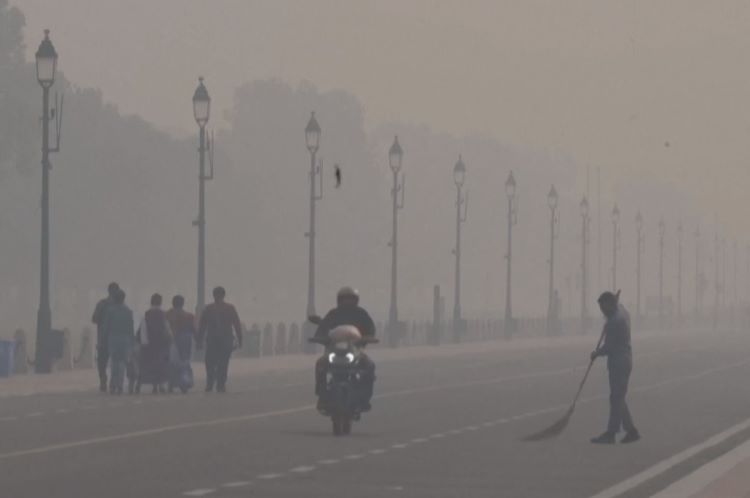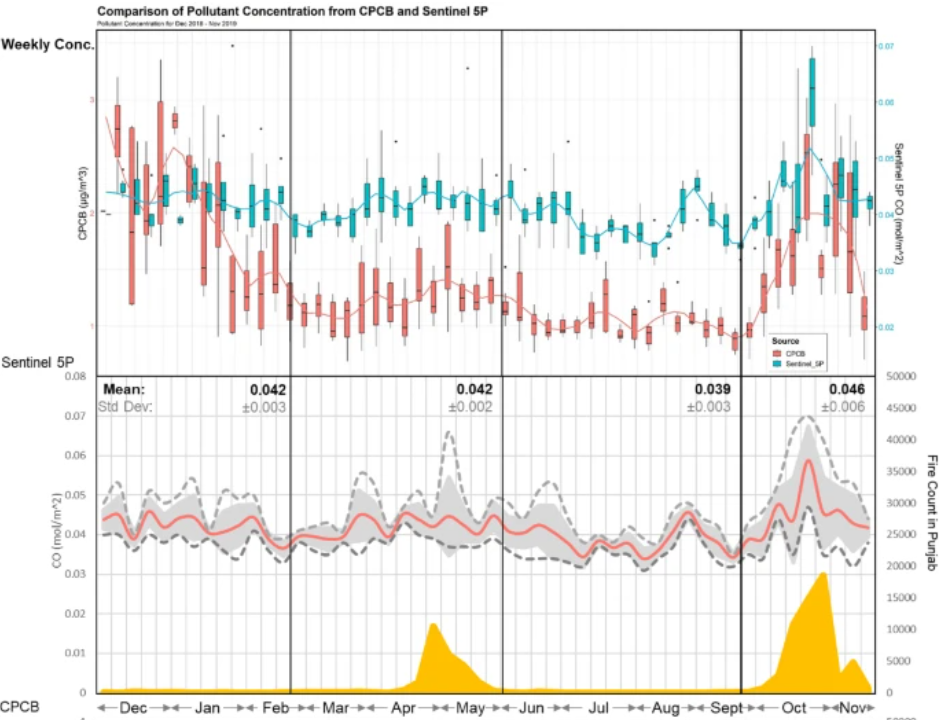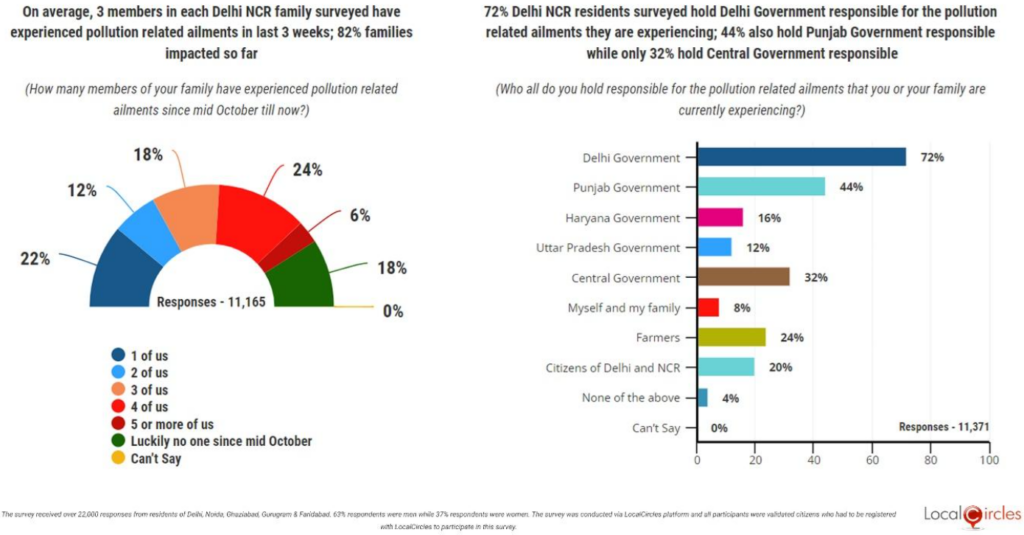
Delhi’s air pollution crisis has become a severe problem, causing significant health hazards, prompting individuals to relocate for cleaner air. The situation is grave during the winter months when the city is shrouded in toxic smog resulting from a combination of construction dust, vehicular emissions, and crop residue burning in neighbouring states. This annual crisis not only affects the health of the city’s residents but also triggers a migration trend to less polluted areas.
Delhi, one of the world’s most polluted cities, faces a dire situation where its residents could lose nearly 12 years of life expectancy due to air pollution. The particulate matter, PM 2.5, is particularly harmful as it penetrates deep into the lungs, causing respiratory and cardiovascular diseases. Despite efforts, the pollution levels remain alarmingly high, affecting the most vulnerable populations and leading to a rise in ‘pollution migrants.’

READ I Choking minds: Air pollution linked to dementia, stroke
Pollution migration from Delhi
A recent survey conducted by LocalCircles among 9,000 respondents from Delhi and neighbouring regions, revealed a worrying trend. About 44% of the respondents reported health issues linked to air pollution. This coincides with reports from healthcare providers like Pristyn Care, indicating that in 2023, six out of 10 residents in Delhi and Mumbai considered relocation due to air quality concerns.
A 2021 Knight Frank report highlighted a shift in priorities among potential homebuyers, with two in five, irrespective of income level, expressing interest in acquiring a second home in areas boasting cleaner air, green spaces, and better healthcare access. These studies collectively suggest that air pollution is emerging as a significant factor influencing migration decisions, potentially leading to an exodus of residents seeking a healthier environment.

Beyond the immediate health implications, the pollution crisis in Delhi has profound socio-economic impacts. The persistent smog leads to decreased productivity due to health-related absences from work and school. The healthcare system is burdened with the increased prevalence of pollution-related diseases, straining resources and finances. Moreover, the air quality issues deter tourism and investment, affecting the city’s economic growth and reputation on a global scale. Addressing these socio-economic challenges requires not only improving air quality but also building resilience among communities to cope with pollution’s adverse effects.
Causes of Delhi’s air pollution crisis
Trans-state pollution, primarily from stubble burning in Punjab and Haryana, significantly contributes to Delhi’s air quality deterioration. Although there has been a reported decrease in stubble burning events, the pollution levels in Delhi continue to rise. The complex interaction of meteorological conditions and pollution sources outside Delhi complicates the issue, necessitating a comprehensive analysis to develop effective solutions.
Effective urban planning plays a crucial role in combating air pollution. Integrating green spaces, promoting sustainable transportation, and enforcing zoning regulations can significantly reduce pollution levels. Urban designs that encourage walking, cycling, and the use of public transport can lessen vehicular emissions. Additionally, green infrastructure, such as parks and rooftop gardens, can help absorb pollutants and improve air quality. Implementing smart city initiatives that leverage technology to monitor and manage pollution sources can also contribute to cleaner air. Therefore, urban planning that prioritises environmental sustainability is key to addressing Delhi’s air quality crisis.
Air pollution is a leading cause of death globally, with India being notably affected. The Indo-Gangetic Plains, including Delhi, experience severe air quality issues due to a combination of atmospheric conditions and emission sources. The seasonal variation in pollutants, influenced by factors like stubble burning, industrial emissions, and vehicle exhaust, highlights the need for detailed studies on pollutant transport and source contribution.
The data from Sentinel-5P TROPOMI and ground-based monitoring reveals the spatial and temporal trends of pollutants like CO, NO2, and SO2. The analysis indicates that while some pollutant levels have decreased due to policy measures and technological advancements, seasonal peaks, particularly during post-monsoon and winter, remain a concern.
Delhi’s geographical position, between the Indo-Gangetic Plain and semi-arid regions, along with its high population density and industrial activities, make it a hotspot for air pollution. The seasonal patterns of pollution, influenced by meteorological conditions and regional emission sources, underscore the complexity of addressing air quality issues in the city.
To tackle Delhi’s pollution crisis, a multi-faceted approach is needed. This includes stringent regulations on industrial emissions, effective waste management, promotion of clean energy, and improved public transportation. Additionally, addressing the issue of stubble burning through sustainable agricultural practices and providing alternatives to farmers is crucial. Policymakers must focus on regional collaboration to manage transboundary pollution and develop comprehensive strategies that consider the interplay of various factors affecting air quality.
Public awareness and participation are vital in the fight against air pollution. Educating residents about the sources and risks of air pollution, as well as ways to reduce personal exposure, can empower individuals to make healthier choices. Community involvement in environmental monitoring and advocacy can pressure authorities to enforce pollution control measures more effectively. Encouraging citizen participation in tree planting activities and waste reduction initiatives can foster a sense of responsibility towards the environment. Thus, enhancing public awareness and facilitating active community engagement are essential components of a comprehensive strategy to improve air quality in Delhi.
The future of Delhi as a liveable urban space depends on concerted efforts to mitigate pollution sources and improve air quality. This requires not only local and national policy interventions but also cooperation with neighbouring regions to address the transboundary nature of pollution. By adopting innovative solutions and embracing sustainable practices, Delhi can transform into a healthier and more sustainable city, ensuring a better quality of life for its residents.
